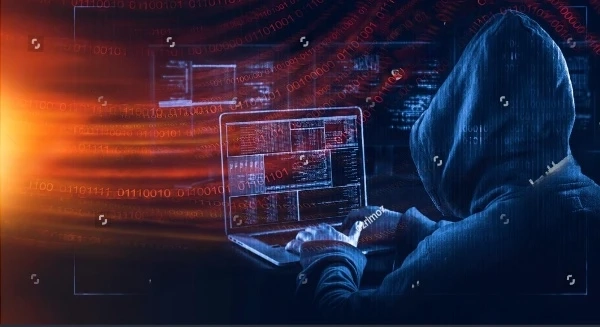The Silent War in Cyberspace
In the shadows of the digital battlefield, state-sponsored threat actors wage silent wars with devastating consequences. Recently, two notorious groups, APT31 and APT27, have emerged as orchestrators of a coordinated cyber espionage campaign against Russia. This blog post will take you through the intricate web of these advanced persistent threats (APTs), shedding light on their history, the specifics of their latest campaign, and the broader implications for global cybersecurity.
Who Are APT31 and APT27?
APT31 Origins and Notoriety
APT31, also known as Zirconium, is believed to be linked to the Chinese government. Known for its stealth and sophistication, APT31 has a history of targeting various sectors, including government, finance, and technology. Their past operations have demonstrated a high level of technical acumen, making them a formidable player in the latest cyber attack news threat landscape.
APT27 Unmasked
APT27, commonly referred to as Bronze Union or Lucky Mouse, also has alleged ties to Chinese state interests. This group has been active for over a decade, focusing on cyber espionage to steal sensitive information. APT27's preferred targets include defense contractors, tech firms, and political entities, using advanced tools and techniques to breach even the most secure networks.
Significance in the Cyber Threat Landscape
Both APT31 and APT27 are critical players in the global cyber threat arena. Their activities significantly impact national security, economic stability, and global politics. Understanding these groups' motives and methods is crucial for developing effective cybersecurity strategies.
The Coordinated Cyber Espionage Campaign Against Russia
Targets in the Crosshairs
The latest campaign by APT31 and APT27 has primarily targeted Russian governmental bodies, defense contractors, and key infrastructure sectors. These attacks aim to gather intelligence, disrupt operations, and potentially influence political outcomes. The scale of these operations suggests a high level of coordination and planning.
Methods and Techniques Employed
The threat actors employed a variety of sophisticated techniques to breach their targets. Spear-phishing emails, exploiting zero-day vulnerabilities, and using customized malware are just a few of the methods observed. These tactics demonstrate the attackers' deep understanding of their targets' security measures and their ability to adapt quickly to new defenses.
Scale of Impact
The impact of this coordinated campaign is far-reaching. Sensitive information has been compromised, leading to potential national security risks. The economic repercussions are also significant, with affected organizations facing financial losses and reputational damage. The scale and sophistication of these attacks have sent shockwaves through the global cybersecurity community.
Tools and Techniques of the Trade
Advanced Malware and Exploits
APT31 and APT27 are known for their use of advanced malware and exploits. These tools are often custom-built to evade detection and maximize damage. For example, APT31's use of unique payload droppers and APT27's deployment of remote access Trojans (RATs) are indicative of their technical prowess.
Phishing and Social Engineering
Phishing remains a favored tactic for these groups. By crafting convincing emails that appear to come from trusted sources, they lure victims into revealing sensitive information or downloading malicious attachments. This method is often the first step in a multi-stage attack designed to breach an organization's defenses.
Data Exfiltration and Lateral Movement
Once inside a network, the attackers focus on data exfiltration and lateral movement. They use tools like Mimikatz to extract credentials and move laterally across the network, accessing more valuable targets. This approach allows them to maintain persistence and avoid detection for extended periods.
The Russian Response
Government and Cybersecurity Agencies React
The Russian government and its cybersecurity agencies have been quick to respond to these threats. Efforts include enhancing defensive measures, conducting thorough investigations, and collaborating with international partners. Despite these efforts, the attribution of cyber attacks remains a significant challenge.
Challenges in Attribution
Attributing cyber attacks to specific groups or states is notoriously difficult. The attackers often use false flags, obfuscation techniques, and various online personas to mask their identities. This ambiguity complicates response efforts and hinders the development of effective countermeasures.
Importance of International Cooperation
Addressing the threat of cyber espionage requires international cooperation. Sharing threat intelligence, coordinating defensive measures, and establishing norms for state behavior in cyberspace are essential steps. Countries must work together to create a safer digital environment for all.
Broader Implications for Global Cybersecurity
Evolving Nature of State-Sponsored Attacks
The cyber espionage campaign by APT31 and APT27 highlights the evolving nature of state-sponsored attacks. These operations are becoming more sophisticated, coordinated, and impactful. Staying ahead of these threats requires continuous innovation and adaptation in cybersecurity practices.
Steps Organizations Can Take to Protect Themselves
Organizations must be proactive in defending against such threats, hacking news. Implementing robust security measures, conducting regular vulnerability assessments, and fostering a culture of cybersecurity awareness are critical steps. Investing in advanced threat detection and response capabilities can also make a significant difference.
The Future of Cyber Espionage
The future of cyber espionage is likely to see increased activity and sophistication. State-sponsored groups will continue to develop new tools and techniques to achieve their objectives. Organizations and governments must stay vigilant, continuously updating their defenses and collaborating to address these challenges.
Conclusion
The coordinated cyber espionage campaign by APT31 and APT27 against Russia serves as a stark reminder of the persistent and evolving threat posed by state-sponsored cyber actors. Understanding their methods, staying informed about the latest cyber attack news, and adopting best practices are crucial steps in safeguarding against such threats. By fostering international cooperation and investing in advanced cybersecurity measures, we can work towards a more secure digital future. Stay informed, stay vigilant, and protect your digital assets.
For more insights into the latest cybersecurity threats and best practices, consider exploring our resources and signing up for our newsletter. Together, we can make the digital world a safer place.


